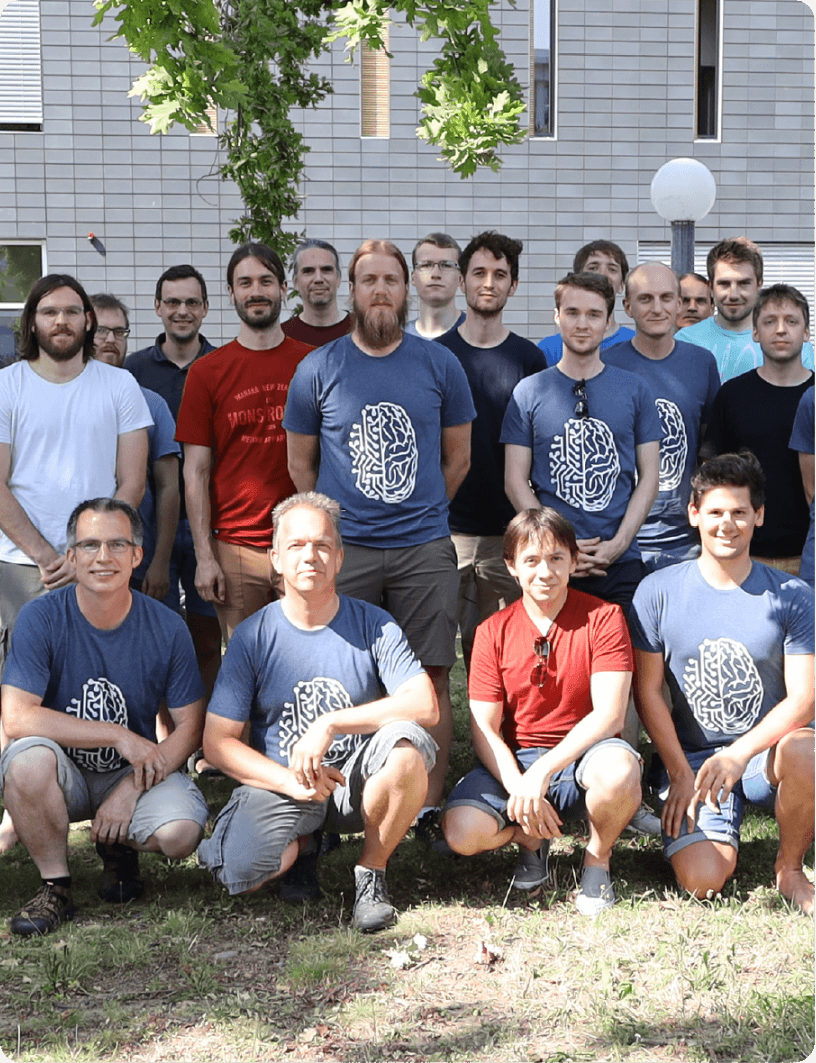
Heidelberg University keeps research teams moving forward with Mattermost
“When you’re [reviewing alerts] manually, at some point, you’ll drown in errors or otherwise won’t be able to find the needle in the haystack to figure out what’s wrong.”Sebastian Schmitt Particle Physicist, Electronic Vision(s)

As part of Heidelberg University, the Kirchhoff-Institute for Physics conducts groundbreaking research across a number of different fields, including biophysics, quantum systems, and neuromorphic computing.
Currently, the Electronic Vision(s) group — a team consisting of roughly 40 postdocs, PhDs, graduate students, and technicians — is studying computational neuroscience and neuromorphic computing to build BrainScaleS: a neuromorphic system that tries to replicate what is currently known about information processing in the mammalian brain. BrainScaleS is part of EBRAINS, the research infrastructure developed within the Human Brain Project.
Helping Researchers Stay Connected and Aligned
Keeping a research group full of scientists who are studying complex problems on the same page is no easy feat. “This is custom hardware, custom software, custom everything,” says Sebastian Schmitt, a particle physicist who’s now focusing on neuromorphic computing. “It requires a lot of communication between members of different teams.”
To speed up communication, the research group had been using Jabber clients and an IRC server to chat in real-time. Over time, they realized those solutions didn’t offer all features, e.g., inline images, files, and other attachments. After reviewing Slack, Gitter, and Rocket.Chat, the group switched to Mattermost, which they host on the university’s infrastructure for added data control and independence.
“Mattermost is by far the best solution,” Schmitt says. “If I had to pick a chat tool for a new team, I would always go with Mattermost.”
Fast-forward to today, and the team has 100 active users, more than 400 public and private channels, and over 550,000 posts they can search through and reference to further their mission. Their Mattermost instance has separate teams that are used for a variety of purposes, including teaching, coordinating research, and collaborating with external users, as well for conference organization and breakout rooms for conference discussion sessions.
Since Mattermost was already in place before COVID-19 hit, Schmitt and his team were able to seamlessly adopt remote work. “It was a smooth transition to working fully remote,” Schmitt explains. “You couldn’t meet for lunch, but you could continue to communicate. There was no disruption. It was mostly business as usual, apart from the on-site work in the labs of course.”
Additionally, the neuromorphic research group uses Mattermost for group communication during conferences. Last year, the team used the REST API to create 200 users from registration data so that they could collaborate while the conference was taking place. “Using Mattermost during the conference was highly successful and will be done again this year,” Schmitt continues.
Integrating with Monitoring and Alerting Tools and Other Automations
As the researchers continue building complex neuromorphic hardware and software solutions, they have to manage a ton of moving parts. By integrating Mattermost with Grafana and using Carbon and Graphite as data sources, the team has created dedicated monitoring channels using webhooks that automatically keep them in the loop with what’s going on. Now, alerts are sent directly to channels that people can subscribe to, which helps the researchers ensure everything remains operational. Each morning, the team analyzes the alerts to see whether any hardware or software errors occurred overnight.
“It’s very nice compared to checking things manually,” Schmitt explains. “When you’re doing it manually, at some point, you’ll drown in errors or otherwise won’t be able to find the needle in the haystack to figure out what’s wrong.”
Additionally, the researchers have integrated Mattermost with Jenkins to accelerate CI/CD pipelines, define using webhooks in Jenkins jobs to report, get experiment results, and receive alerts when builds fail.
The group maintains bridges to other chat services like Discord and Rocket.Chat to allow for a seamless collaboration and automated forwarding of announcements.
Keeping Complete Control Over Data
For researchers like Schmitt and his team, one of the main draws of Mattermost is the fact that it gives them complete control over their messaging data. “I always feel better when I self-host,” Schmitt says. “It’s my data and I keep control over it.” In fact, this functionality is one of the main reasons the research team selected Mattermost over other alternatives, including Slack.
Mattermost being open source is also an important aspect, since group members are mostly in favor of free software compared to closed-source/proprietary solutions.
Any last words?
“The documentation is very good, especially for installation and upgrade,” Schmitt concludes. “So, shout out to the documentation team. They do a great job! Also the LaTeX and Markdown syntax are important for scientific communication and work well. If there would be one thing that we would wish for improvement in the short term, it would be the flexibility of the search.”
Though Mattermost already sits at the core of the research group’s workflows, they are continuing to examine additional use cases. Looking ahead, the team hopes to begin incorporating Boards for project management and are always eager to see what Mattermost will offer next.
The positive experience with Mattermost spread across to other groups like Tetzlaff Research Group and the Neuro-inspired Theory, Modeling, and Applications research group and it will be used in the new European Institute for Novel Computing at Heidelberg University.

